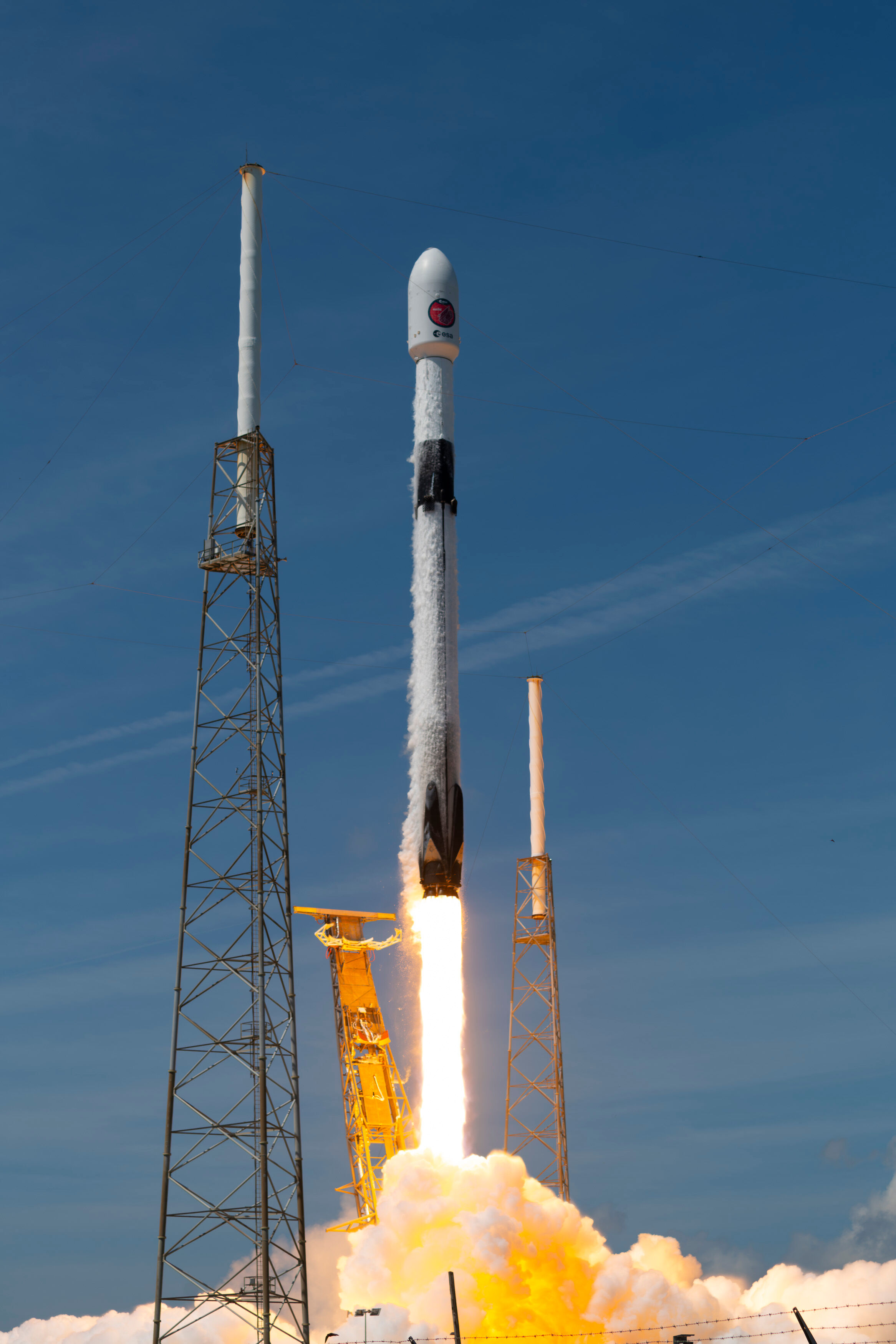LaunchesTelecommunicationAriane 5 Launches
An Ariane 5G blasts off
Please sign in to download.
An Ariane 5G blasts off from the Ariane Launch Complex no.3 (ELA-3) of the Guiana Space Centre, Europe's space port, on July 12, 2000. On this flight (V142), the payloads were ESA's Artemis advanced geostationary relay satellite and BSAT-2b, a Japanese direct broadcasting satellite. An anomaly during the upper stage burn resulted in a performance shortfall and Artemis had to use its onboard propellant and experimental ion thrusters to reach its final geostationary orbit. It eventually arrived on station by January 2003. The generic version of the Ariane 5 family of launchers, the Ariane 5G can lift up to 6.8 metric tons of payload to geostationary transfer orbit (GTO). The Ariane 5 program was decided by ESA in 1987 to provide a successor to the initial Ariane 1 to 4 series of vehicles in order to ensure continuity of Europe's guaranteed access to space. The development program was delegated to CNES, the French space agency. Ariane 5 was introduced in 1996. The first successful flight of an Ariane 5G was conducted in October 1997 and this version became operational in 1999 with Arianespace taking over commercial operations on behalf of ESA. Its first commercial flight, in December 1999, lofted ESA's XMM-Newton X-ray observatory to a highly elliptical orbit. The Ariane 5G can carry a wide range of payloads to all kinds of orbits, including geostationary satellites, space probes, Sun-synchronous Earth observation platforms or Autonomous Transfer Vehicles for resupply and reboost missions to the International Space Station. Upgraded versions have been derived from the Ariane 5G through the Ariane 5 Evolution and Ariane 5 Plus programs decided by ESA in 1995 and 1999 respectively, to increase the GTO payload capacity to 10 tons, with the Ariane 5 ECA, first launched in December 2002, and to 12 tons with the Ariane 5 ECB, scheduled for 2006.


















